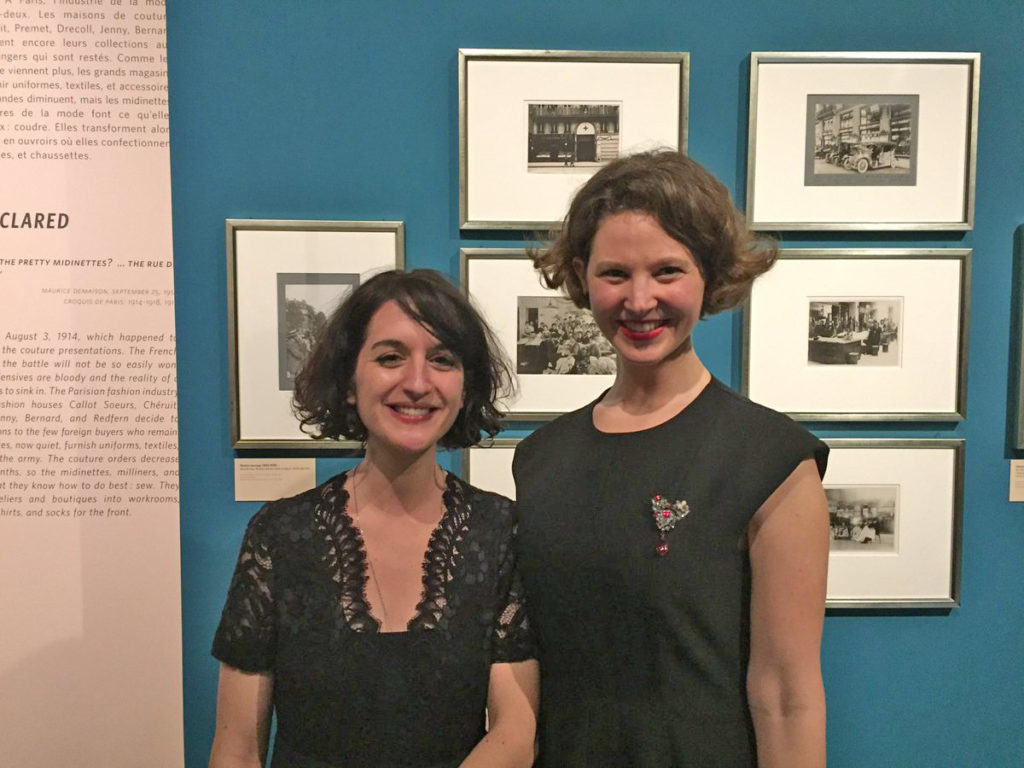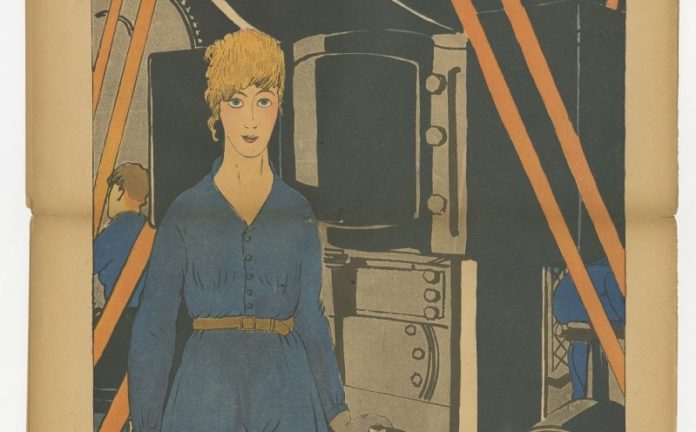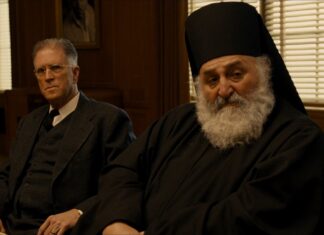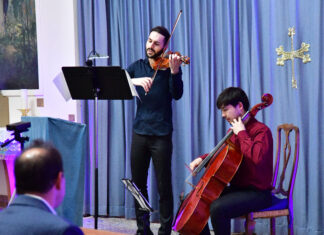NEW YORK — “French Fashion, Women, and the First World War,” on view at Bard Graduate Center Gallery, 18 West 86th Street, New York City, from September 5 through January 5, 2020, is an unprecedented examination of the fraught and dynamic relationship between fashion, war, and gender politics in France during World War I. Women mobilized to keep the French economy afloat, as did the clothing industry (the second largest economic driver in France at the time). The fashion press promoted Paris’ leading female designers — Jeanne Paquin, Jeanne Lanvin, and Jenny Sacerdote — intensively. Paquin, Lanvin and Sacerdote were smart businesswomen prior to 1914, and the war only enhanced their dominance on the international scene. Among Paris’ rising couturiers was Gabrielle Chanel, whose simple, elegant designs helped her rise to prominence during the war and whose jersey skirt suits captured the zeitgeist of this new era.
With its diverse range of clothing and ephemera, from the exquisite to the quotidian, this exhibition brings into sharp focus the relationship between fashion and war, and how fashion reflected social change and became the locus of male anxiety in the face of rapid social upheaval. What role did fashion play in the disjunction between the horrors of the front experienced by French soldiers, resulting in almost 1.5 million dead, and the reality of life in wartime, in which women worked valiantly to provide for their families and contribute to the war effort? Can the endless critical discourse around what women wore, how they wore it, and the anxieties it provoked explain the stilted progress of women’s emancipation in postwar France, where women did not gain the right to vote until 1944?

Through detailed research and loans from major fashion houses and museums, curators Maude Bass-Krueger and Sophie Kurkdjian have amassed a collection of wartime skirt suits, nurses’ and ambulance attendants’ uniforms, mourning dresses, and “military-style” hats that will be exhibited alongside fashions by Chanel and Lanvin that are making their first appearance in the United States. In addition, printed documents — postcards, commercial catalogues, fashion magazines, advertising posters, and photographs — that have rarely, if ever, been previously exhibited — will be on view.
In addition to the carefully selected garments and the range of documentation on view, French Fashion, Women, and the First World War provides rich contextual material illustrating tensions within the couture industry during the period, notably the major strike of 1917 by fashion house workers; the idealization and criticism of nurses and their uniforms; changes in mourning etiquette; the efforts of the couturiers, during wartime disorder, to protect and promote their interests abroad; and the suffrage movement, which advanced in the United States and Britain immediately following 1918, but stalled in France, where women did not gain the right to vote until 1944.
French Fashion, Women, and the First World War will be accompanied by a lavishly illustrated catalogue published by Yale University Press in collaboration with Bard Graduate Center. In addition to Maude Bass-Krueger and Sophie Kurkdjian, editors of the volume, contributors include Margaret Darrow (Dartmouth College), Michele Majer (Bard Graduate Center), Jérémie Brucker (Université d’Angers), Susan Grayzel (Utah State University), and Johanne Berlemont and Anaïs Raynaud (Musée de la Grande Guerre de Pays de Meaux). The 375-page book will be available in the Gallery and at store.bgc.bard.edu.








